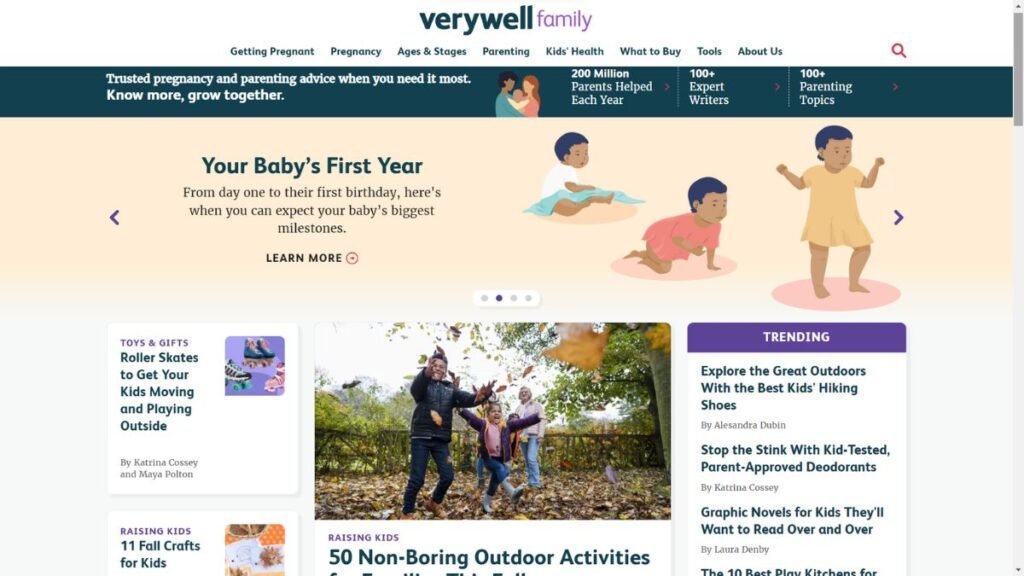Imagine walking into your favourite clothing boutique – everything is neatly arranged into sections that make shopping a breeze. Sweaters in one area, dresses together over there, accessories by the fitting rooms. Within each area, items are further grouped – long sleeve sweaters distinguished from short sleeve, mini dresses separated from midis.
This strategic layout allows customers to find exactly what they need easily. Whether browsing new arrivals or needing an outfit for an event, the store organization guides shoppers effortlessly to potential picks. The structured system demonstrates an expertise in fashion, instilling confidence in the store’s style authority.
Topic clustering is organizing your website’s content with a similar approach to this boutique. By establishing core ‘sections’ centred on main topics and then grouping related subtopics within, your visitors can smoothly discover everything you have to offer on a subject. And just as the boutique’s system signals fashion know-how, SEO topic clusters establish your authority in the eyes of both human shoppers and Google’s algorithms.
What are SEO Topic Clusters?
If you’re creating content for SEO, you may have heard about “topic clusters” and grouping your content around specific themes or topics. But what exactly are SEO topic clusters?
Topic clusters are groups of related web pages or content organized around a central topic, theme, or subject area. The goal is to create dedicated “mini-hubs” on your site that provide in-depth information and resources on specific subjects that are relevant to your audience.
Key Aspects of SEO Topic Clusters
Pillar Pages
Pillar pages form the foundation of each cluster as the main topic it revolves around. These cornerstone pages provide a broad overview of the topic in 1000+ words or more to introduce readers and search engines to the overall subject matter. They answer high-intent, core questions like “What is furniture?” by comprehensively covering different types of furniture available. Internal links are built to smoothly connect the pillar page to related subtopic pages within its cluster.
Subtopic pages
Subtopic pages explore specific aspects of the main pillar topic in more detail. For example, within a furniture pillar, a subtopic page may zoom in on sofas. These pages include in-depth coverage of 300-500 words about that particular subtopic. Keyword research is conducted to fully understand related search intent and address user questions on the specialized topic. Importantly, subtopic pages contain internal links connecting back to the pillar page to reinforce the relationship between the pieces of content and provide important contextual relevance.
Internal Linking
Interlinking subtopics and pillars is a critical component that transforms separate pages into a true cluster. Establishing strong internal linking involves using bi-directional, meaningful anchor text between pages. Not only does the pillar link out to its related subtopics, but those subtopics also link back to their pillar for added reinforcement. Pagination links are another best practice, smoothly connecting readers between similarly focused subtopic pages.
Grouping Subtopics
Effectively organizing subtopic pages makes the cluster more navigable and improves the user experience. It involves logically partitioning sub-elements under umbrella headings to break the pillar topic down into granular subsets.
For example, in a furniture topic cluster, rather than having a page simply called “Sofas”, the subtopics could be grouped as:
- Fabric Sofas: Include subpages on microfiber, linen, and cotton sofas
- Leather Sofas: Comprise pages covering genuine, faux, and bonded leather sofa types
- Sofa Beds: Encompass styles that convert between seating and sleeping configurations
These family-oriented headings aid discovery by guiding readers to specific interest areas. They impart an easy browsing structure for exploring varieties within the core category.
Consistent formatting across grouping labels keeps the organization intuitive and visually cohesive. Tools like navigation menus can display subgroup options to further streamline the surfacing of relevant subpages.
Proper tagging also supports grouping – pages marked “fabric sofas” become discoverable together under that umbrella. Related tags and headings help search engines understand conceptual associations.
An intentional subdivision of subtopics satisfies a range of search intent while retaining focus within the pillar topic. It transforms an overwhelming mass of data into bite-sized clusters optimized for learning.
Visual Assets
Visual elements like images, diagrams, infographics, and videos bring otherwise dry topics to life. They help increase understanding for both readers and search engines attempting to ascertain what the pages cover. Using engaging, representative assets consistently throughout a cluster is important for maximum impact. Descriptive ALT text should also include focus keywords.
Also Read: 10 Most Common SEO Mistakes to Avoid
Things to note about topic clusters
- They immerse site visitors by offering multiple pages and assets exploring different angles of a topic. This establishes you as an expert authority.
- Content is woven together using structured internal linking. This helps search engines understand the context and makes navigating the site intuitive for users.
- Individual pages contribute to the authority of the wider cluster topic. Incoming links, sharing, and engagement lift up the whole cluster in SERPs over time.
- Common cluster topics for businesses include product categories, services offered, solutions provided, technical/how-to guides, and answers to frequently asked questions.
- Effective clusters zero in on targeted commercial intents and solve real problems or questions for your buyers.
Creating topic clusters is a strategic way to fully satisfy website visitors and strengthen your online expertise.
Why SEO topic clusters are so important?
Beyond just the SEO perks, there are real user experience factors at play too. People access info totally differently now – we consume content on phones more than laptops for starters.
When searches return one giant topic dump, that mobile visitor is sprinting a marathon to find what they need. But give them a neatly clustered mini-hub? They’ll linger and read more engagement-boosting material.
It’s just logical – clusters break topics into bite-sized chunks easier to explore on the go. And the more people consume within your niche, the more loyal customers you gain long-term.
Plus, all this clustering strengthens your brand authority like whoa. Users recognize expert websites as the ones truly satisfying every angle of each query.
Work these topic hubs right and soon your name becomes synonymous with solutions for X, Y, and Z problems within your industry. Try ranking for broad terms like that without organized content!
The point is, don’t think of this as just an SEO checkbox. Topic clusters profoundly improve the user experience and grow your reputation too. They make your biz look polished and legit next to one-pagers out there.
Do SEO Topic Clusters Actually Impact SERPs?
One thing the studies don’t show is how clusters strengthen individual page authority over time as well. See, Google’s algorithms love context, so they understand related pages bundled together are more useful resources.
As visitors engage across your clustered content, it tells Google “This page and all these others about the same topic must be credible”. The more links and references between pages in a cluster, the more each piece contributes to the authority of the whole mini-hub.
So not only do clusters boost your overall domain expertise scores, but they lift the ranking potential of every page within those bundles too through their associations. It’s a virtuous SEO cycle!
We’ve also noticed that clustered sites tend to rank higher and more often for phrase matches versus exact match keywords. Why? Because they’re fully satisfying search Intent beyond one query with comprehensive topical pages.
Google recognizes the mission-critical topics your clustered pages explore and recommends you for related long-tail searches people don’t even type out verbatim. Pretty neat!
In the end, whether you’re going for exact keywords or mysterious phrase matches, topic clusters give both your individual pages and the whole site the structured framework needed to maximize search relevance and prominence.
Also Read: Does Google Index CSV files on SERP?
What Does Topic Cluster Mean for a Website?
Well for starters, it’s a golden opportunity to take your online visibility and authority up a notch without much work. Just by thoughtfully reorganizing what content you already have into targeted topic bundles.
Plus it’s never been more important – as Google continues pushing sites to better satisfy search intent through comprehensive topical dives online.
So if your site’s information is still scattered around loosely tagged pages, it’s time for a content audit. Clustering gives you a framework for strengthening each page and your whole brand’s expertise in the process.
Maybe you’re ranking okay for a few small keywords now, but imagine optimizing for dozens of long-tail, high-intent searches within your clusters long run. Customers will find you through far more searches!
Plus can you put a price on reducing bounce rates and increasing time on site? Clusters sculpt the perfect user experience for boosting engagement and loyalty over the long haul.
Topic clusters exponentially grow your search presence worldwide while also enhancing the value your information delivers to visitors. It’s a win-win for both users and search placement!
For further clarity, let’s take up a more detailed example of what this could potentially look like for a website.
Clara runs an Etsy shop selling homemade jewellery. Right now her about and blog pages cover general craft tutorials and business tips scattered around loosely.
With clustering, she could organize those into in-depth mini hubs like:
- Beading Techniques
- Findings and Components
- Metalworking Processes
- Setting Stones
- Marketing Your Shop
Each hub would have 2-3 pillar pages thoroughly covering subtopics, backed by related tutorials, tool guides, tips articles, etc.
Now visitors exploring beading are fully immersed in her authority on the topic from multiple angles. And she fully satisfies search intent for myriad long tail keywords instead of just “how to bead jewellery”.
This structure also makes her expertise crystal clear for someone searching for the craft within marketing contexts too. It’s a win-win for users and SEO rankings alike!
Plus later, she could expand clusters or create new ones for season trends to stay on top of changes.
Must Read: 10 Important SEO Metrics To Track Performance
How to Create SEO Topic Clusters?
An SEO topic cluster can be created by following these simple steps:
- Start With An Audit: Print out all your website’s pages and blog posts. Have a look to see what naturally fits together – this will form your initial topic clusters. For example, you may see a section on marketing tactics, and another focused on design tutorials. Get a sense of your high-level content categories before diving into individual pages.
- Circle Pillar Pages: These will be your flagship articles or pages for each cluster. Dedicate extra editing effort to making them extremely detailed and valuable on their own. For example, an in-depth guide on cost-effective Twitter marketing tactics could be a pillar for a social media cluster.
- Group Related Side Pages: Take the secondary articles, videos, or assets and arrange them underneath the relevant pillar page. For instance, you could list brief how-to’s on Facebook ads or Instagram advertising under the Twitter guide since they’re all social networking tools.
- Name Your Clusters: Call each cluster something specific yet appealing that encapsulates the topic – avoid vague project names. For example, “Etsy Marketing Mastery” sets clearer expectations than “tips_for_sellers”.
- Physically Rearrange Content: Move or rewrite pages so the clusters flow like natural topical conversations on your site. Link between related pieces seamlessly.
- Take Your Time Tweaking: Internal linking and transitions are crucial. Spend time cross-connecting cluster pages to reinforce contextual relationships.
- Measure & Refine Over Time: As you promote clusters, watch analytics to see what topics or angles resonate most with users. Evolve clusters accordingly.
- Keep Updating Regularly: Stay on top of trends by expanding clusters or launching fresh ones down the line. Satellite content keeps your expertise relevant and rankings rising.
How to create topic clusters:
— Semrush (@semrush) April 19, 2022
1️⃣ Choose a core topic
2️⃣ Perform keyword research on your core topic
3️⃣ Outline pillar & topic cluster structure for your core topic
4️⃣ Produce & publish content
5️⃣ Add internal links to supporting topic clusters pic.twitter.com/Cbd5z4EmCU
Tips to Get Started With SEO Topic Clusters
Now that we’ve walked through creating clusters, here are some tactical tips to really optimize them:
Keywords Research
Audit your analytics to find top phrases and related terms people use when they find your site. Build a long tail keyword list, then weave those naturally into your cluster content and page headings. Going deeper than the main keywords shows full topical authority.
Example: For her Etsy shop Clara clustered about bead weaving, she analyzed keywords like “seed bead jewellery patterns” and added natural mentions/headers throughout the content.
Build Pillar Pages First
Pick two to three flagship pages per topic to optimize initially before side content. Do thorough on-page SEO – 1200+ words, internal links, targeting main keywords as well as related long tail phrases. These will become your strongest pages to seed authority in each cluster for Google.
Example: Clara fleshed out a 1200+ word guide covering different beading stitches in detail with plenty of photos and embedded videos to rank for “seed bead stitching techniques”.
Strategic Internal Links
‘Link together your highest intent clusters and keywords to signal relatedness, passing rank strength within. Start your pillar pages linking outward to lesser pages. Place keyword-rich text links in a natural flow of content. As clusters evolve, add links showing the relationship between concepts. The more engaged time on the domain, the better Google understands the theme of your site’s authority.
Example: In the pillar page, Clara included links like “read about other stringing methods here” which points inward to a related techniques article.
Optimize for Mobile
Nest headers, shorten paragraphs and add spacing for easy scanning. Use images, full-width videos, and other visuals. Test clusters load fast, and look great across devices. Users spend more time on optimized mobile sites, boosting time-on-page signals Google loves.
Example: Clara used heading styles H2/H3 to break up the stitching techniques article into scannable sections. Large-centered photos resonate on phones.
Test Keyphrase Targeting
Pick a keyword for each new cluster and marketpillar pages through ads/social to improve SEO factoring. Track ROI to see which keywords convert best. Optimize others based on data seen. This helps loops maximize organic clicks long run.
Example: Clara promoted the “seed bead stitching” pillar page through a $5 Twitter boost targeting US customers to see transaction-driven ROI over a month. This targeting helped confirm seed beads are a popular craft, informing her cluster expansions over time.
Also Read: 15 Powerful Reasons Your Business Requires SEO Today
Tracking Progress and Optimization
Tracking your progress is crucial for maximizing the benefits of topic clusters over the long run. Here are some important factors to monitor:
- Keyword Rankings: Use a free analytics tool like Semrush or Ahrefs to check where your targeted cluster keywords fall in SERPs month after month. Google progresses rankings gradually, so spotting upward trends is key.
- Organic Traffic: In Google Analytics, analyze how clicks and unique visitors to your cluster pages change. Are targeted users finding you more through search results?
- Engagement Stats: Take note of the average time on the page and bounce rate for cluster content. These tell Google and you which configurations appeal most to users for further optimization.
- Content Gaps: If specific cluster topics appear less interacted with, consider adding depth through additional articles to round it out. Identify what users search for but can’t find!
- Backlink Profile: Make sure your strongest cluster pages have social shares, citations, and third-party endorsements building trusted authority progressively. These pass additional weight within SERPs over time.
By routinely gauging these metrics, you’ll spot what’s working well and spots for enhancement, helping the continual growth of your online expertise and search dominance!
Real-Life Examples on Topic Cluster
Verywell Family
Here is an example of effective topic clustering you can see on Verywell Family’s site:

Their Pregnancy cluster provides comprehensive guidance for expectant mothers. The flagship page is Pregnancy Week by Week – a detailed guide tracking baby’s development and mom’s symptoms week-to-week.
Related side pages underneath include:
- Pregnancy Symptoms – explaining common signs mothers experience each trimester.
- Preparing for Baby – with checklists for hospital bags, nursery tasks, and items newborns need.
- Staying Healthy – covering nutrition, fitness, sleep tips, and how to handle common discomforts.
- Complications & Concerns – outlining potential risks and how to spot early signs of issues.
Each page within the cluster contains internal links to other relevant resources for cross-referencing information. For example, the Symptoms page links to natural remedies mentioned in Staying Healthy.
By comprehensively clustering all pregnancy needs under the flagship Week by Week guide, Verywell Family satisfies users seeking any information about the 9 months. This establishes them as a top authority and ensures searchers can easily access interrelated material.
Their clustering approach across 100+ parenting topics makes Verywell Family a valuable one-stop resource.
The Spruce

Their Home cluster includes pillar pages on Interior Design, Organizing, Cleaning, and more. Subtopics dive into specific rooms, chore guides, and before/after makeovers.
Some pillar pages in their Home cluster include:
- Interior Design – Covering core concepts like color schemes, furniture arrangements, and room layouts.
- Home Organization – Offering checklists and ideas for organizing specific spaces like closets, garages, and toy rooms.
Key subtopic pages under each include:
For Interior Design:
- Living Room Makeover Ideas
- Kitchen Remodel Projects
- Best Paint Colors for Bedrooms
For Home Organization:
- Laundry Room Organization
- Decluttering the Home Office
- Meal Planning and Grocery Lists
There are also deep cleaning guides for specific rooms and chore guides for surfaces like floors, bathrooms, and cleaning supplies.
All pages internally link back to the relevant pillar for broader context. Photos further demonstrate organizational tips and design results.
By thoroughly exploring the topics of interior design and organization, The Spruce has established expertise that searchers looking to overhaul a space can easily access. Their comprehensive clustering satisfies many home improvement intent queries.
They have “collection” pages under each pillar to group related subtopics. For example:
Under Interior Design
A “Living Rooms” collection page links to articles on colors, lighting, and layout ideas for different styles.
A “Bedrooms” collection connects makeover guides for small spaces, storage solutions, and accessories.
Under Home Organization
A “Kitchen Organization” hub ties together posts on appliances, cabinets, pantries, and meal prep stations.
A “Craft Rooms” collection serves DIY and sewing enthusiasts.
Tagging content helps searchers filter – rooms are tagged “living room”, surfaces tagged “walls” etc.
Authors are interior designers, organizers, and DIY experts – adding trust. Posts include lots of photos illustrating steps.
Pillar pages answer broad questions while collections/tags funnel search intent. Together it’s a discovery playground!
Conclusion
Group content around topics people really search for to fully satisfy their informational needs through comprehensive hubs. This enhances the relevance of search algorithms.
Prioritize crafting flagship cluster pages extensively covering subtopics to cultivate authority. These will become your strongest pages to expand your rankings.
Cross-reference side articles and assets within pillar pages for contextual flow that appeals to both users and indexing bots scanning relationships.
Continuously refine and expand over time based on performance metrics to sustain momentum and keep clusters up-to-date on trending angles.
Establishing topic leadership for related queries is the name of the game when it comes to SEO clustering. Done deliberately, it yields huge visibility gains!
Always optimize clusters primarily for people by delivering clear value at every step. Search success will follow naturally as a result.
Hope these key takeaways provide useful reminders to stay focused on doing right by searchers through Complete, credible resources.





